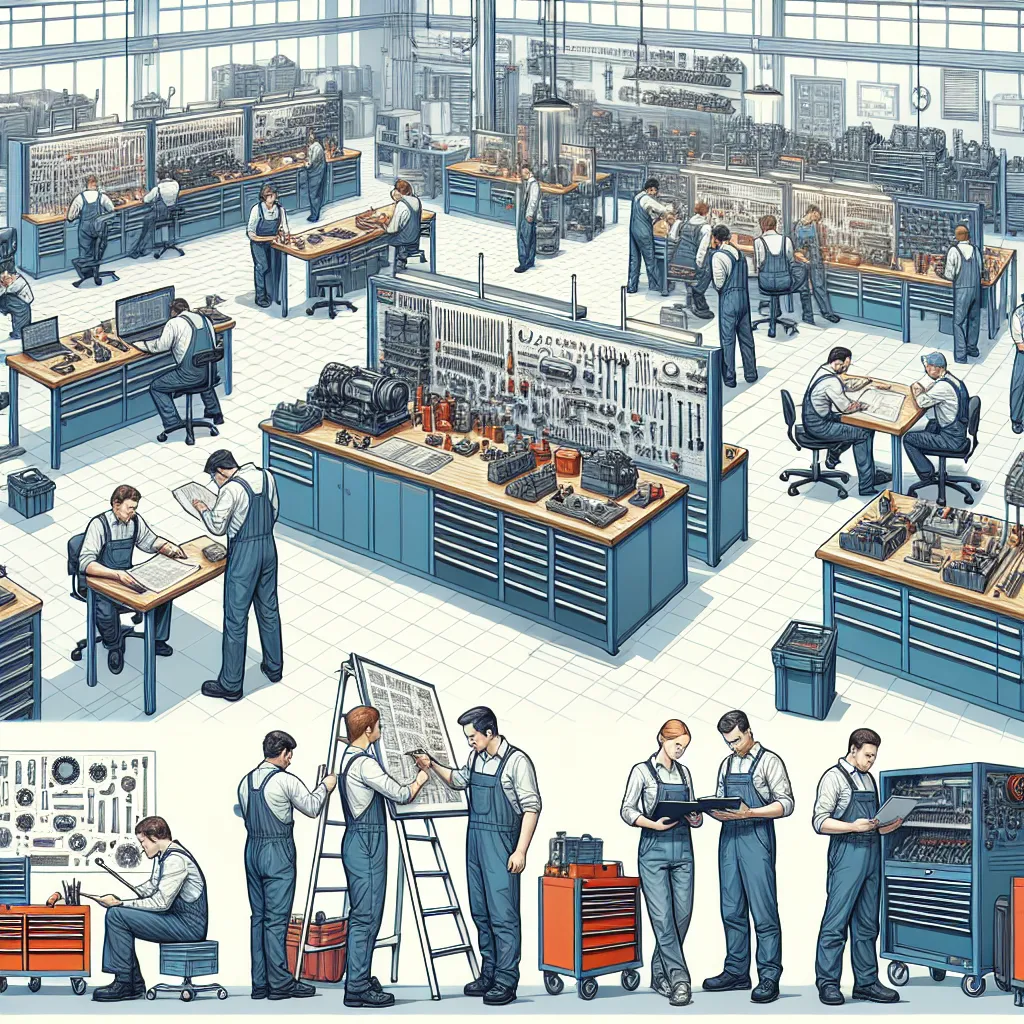Importance of Preventive Maintenance in Facility Management
Preventive maintenance is a critical aspect of effective facility management, ensuring that facilities are running smoothly and efficiently. By implementing a proactive approach to maintenance, facility managers can avoid costly repairs, minimize downtime, and extend the lifespan of equipment and assets. Preventive maintenance involves regularly scheduled inspections, maintenance tasks, and repairs to identify and address potential issues before they escalate into significant problems.
One key strategy for effective preventive maintenance is to develop a comprehensive maintenance schedule that outlines the specific tasks and inspections to be performed at regular intervals. This schedule should take into account the manufacturer’s recommendations, industry best practices, and the unique needs of the facility. By following a well-defined maintenance schedule, facility managers can stay ahead of potential issues and maintain the optimal functioning of critical systems and equipment.
Another important aspect of preventive maintenance is the use of advanced technology and tools to streamline maintenance processes. Computerized maintenance management systems (CMMS) can help track maintenance activities, schedule tasks, and generate reports to ensure that nothing falls through the cracks. Additionally, sensor-based predictive maintenance tools can provide real-time insights into the health and performance of equipment, allowing for timely interventions and proactive maintenance.
Incorporating preventive maintenance into facility management practices not only enhances the reliability and efficiency of facilities but also contributes to a safer and more comfortable environment for occupants. Regular maintenance of HVAC systems, electrical components, plumbing, and other critical systems can help prevent unexpected breakdowns and create a more sustainable and productive facility. Ultimately, a proactive approach to maintenance can result in cost savings, improved asset performance, and enhanced overall facility operations.
Utilizing Technology for Streamlined Facility Maintenance
In the modern era, facility maintenance management has been revolutionized by the utilization of cutting-edge technology. By incorporating advanced software systems, predictive maintenance tools, and Internet of Things (IoT) devices, facilities can achieve streamlined and highly efficient maintenance operations. One of the key strategies for effective facility maintenance management is leveraging technology to ensure proactive and predictive maintenance rather than reactive measures.
Utilizing a computerized maintenance management system (CMMS) is paramount for comprehensive facility maintenance. This software enables facility managers to schedule maintenance tasks, track work orders, manage inventory, and generate insightful reports for informed decision-making. CMMS not only centralizes maintenance operations but also optimizes resource allocation, reduces downtime, and extends the lifespan of equipment, ultimately leading to cost savings and increased productivity.
Moreover, the integration of IoT devices allows real-time monitoring of equipment performance and environmental conditions. Sensors embedded within critical assets can collect data on temperature, humidity, energy consumption, and equipment vibrations. This data is then analyzed to predict potential failures, identify inefficiencies, and optimize maintenance schedules. By harnessing the power of IoT, facility managers can shift from calendar-based maintenance to condition-based maintenance, thereby reducing the likelihood of sudden breakdowns and minimizing unplanned downtime.
Furthermore, the implementation of predictive maintenance tools, powered by machine learning algorithms, empowers facilities to forecast equipment failures and prioritize maintenance tasks accordingly. These tools analyze historical maintenance data, equipment usage patterns, and environmental factors to generate accurate predictions, allowing for proactive intervention before a major breakdown occurs. As a result, facility managers can effectively allocate resources, minimize disruptions, and enhance the overall reliability of critical assets.
In conclusion, the seamless integration of technology into facility maintenance management is fundamental for achieving operational efficiency, cost-effectiveness, and sustainability. By harnessing the capabilities of CMMS, IoT devices, and predictive maintenance tools, facilities can proactively uphold their assets, minimize downtime, and elevate their overall maintenance practices to unprecedented levels of excellence.
Maximizing Efficiency through Data-Driven Maintenance Strategies
Maximizing efficiency through data-driven maintenance strategies is a key aspect of effective facility maintenance management. By leveraging the power of data, facility managers can make informed decisions, prioritize maintenance tasks, and optimize resource allocation. Utilizing data analytics and predictive maintenance software enables proactive identification of potential issues, thus minimizing downtime and reducing overall maintenance costs.
Implementing a comprehensive computerized maintenance management system (CMMS) allows facilities to collect and analyze a wide array of data, including equipment performance, historical maintenance records, and real-time sensor data. This wealth of information provides valuable insights into equipment health, usage patterns, and maintenance trends, enabling facility managers to develop proactive maintenance plans.
Furthermore, integrating internet of things (IoT) devices and sensors into facility equipment enables real-time monitoring and data collection. This continuous stream of data allows for the identification of potential issues before they escalate, leading to decreased equipment failures and unplanned downtime.
In addition, leveraging predictive analytics can help forecast equipment failures and maintenance needs, allowing for the scheduling of maintenance activities during periods of low facility utilization. This proactive approach minimizes disruption to operations and maximizes the productive use of maintenance resources.
By embracing data-driven maintenance strategies, facilities can achieve higher operational efficiency, improved equipment reliability, and reduced maintenance costs. As the digitalization of facility maintenance continues to evolve, harnessing the power of data will be crucial for driving effective maintenance management practices.




